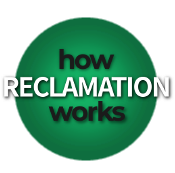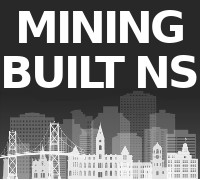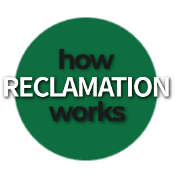- Why Mining Matters
- Jobs
- Safety
- Environment & Operations
- FAQ
- Links
- Fun Stuff
You are here

Thomas J. Brown
BESCO’s Pension
Dan McIsaac and Jim Taylor
Tius Tutty
Wilson Beaton
Aerotech Connector
Henry Swift
1885 Vale Tour
Douglas Slope Explosion
John Angus MacNeil and WWI
Florence Colliery
Joseph Walton
James Lennon
James Hamilton
1918 Allan Mine Disaster
Robert Boutilier’s Luck
Springhill’s John Anderson
Plight of Youth in 1931
Miners’ Wives Praised
Dominion No. 1B in 1931
Allan Shaft, 1931
Private Maceachern
Husseys Prospectus
William Routledge
Swell Factor in Reclamation
Gowrie Mine
River Hebert
Joggins 1904 Fire
Port Hood 1911 Flood
Lamp Cabin Memorial Park
Drummond 1873 Disaster
1872 Accidents
Springhill’s Novaco Mine
1860's Accident
New Glasgow's Linacy Mine
1913 Drummond Fires
1908 Princess Fire
Albion Mines 1913 Fire
DOSCO Miner
Cape Breton's TNT
The McCormick and Turner families
Payday Drunk
John Croak’s Victoria Cross
Atlantic Slag Company
Sydney Cement Company
1914 Coal Mine Cost
Dominion No 2
Canary in a Coal Mine
Draegermen
James Dinn
Pit Ponies
Henry Wadsworth Longfellow
1877 Accidents
Allan Shaft 1912
William Fleming
The Story of Peat
T. G. MacKenzie
Trenton Steel
1930 Stats
MacGregor Mine Explosion
MacGregor Flood
Torbanite Products Limited
Abraham Gesner and Kerosene
1860 Prince of Wales Visit
Dominion No 5
The Royal William and Stellarton Coal
Tom Pit
Terminal City
1875 Accidents
Cannons in Coal Mines
Princess Mine Explosion
Dominion No. 26
A Tale of Two Mines
Franklin Colliery
Robert J. Grant
Springhill No. 1
Mother Coo
Submarine Mines
Barrachois Mine
Fundy Coal Seam
Dominion #14
Dominion #12
Dominion No 4
Child Labour
Joggins Colliery
Safety
Bootleggers
Richmond County
Mabou Mines
Stellar Coal
English Slope
Maccan/Jubilee
The Foster Pit Fire and the Poop Solution
Thomas Edison and the Chignecto coal mine
Henry Whitney and the Dominion Coal Company
Foord Pit
Hiawatha Coal Mine
Coalburn
Springhill Disasters
St. Rose-Chimney Coalfield
Stellarton, Dorrington Softball Complex
How Does Coal Form?
Drummond Coal Mine
Sydney Coalfield and the Princess Mine
Port Morien, 1720
Port Hood
General Mining Association
Thorburn
WWII and Nova Scotia Coal
Nova Scotia's First Railway
Samuel Cunard
Stellarton’s Mining Connections
Sydney Mines
Point Aconi
Victoria Mines
Sullivan Creek
New Campbellton
Inverness and Cabot Links
The Ghost Town of Broughton
Tobin Road, Sydney Mines
Flint Island Coal Mine?!
What does Colliery mean?
Cottam Settlement
Allan Mine
James Hamilton
James Hamilton died in 1928 in Westville’s Drummond coal mine. Historical accidents like his are partly why the modern mining and quarrying industry is so safety focussed. The industry has reduced its injury rate by 90% since the Westray inquiry report was released in 1997.
James Y. Hamilton was a timberman, meaning he installed wooden posts to help support the roof (ceiling) of the Drummond mine, to prevent rock from falling.
About 8:00 a.m. on Monday, August 13, 1928, he was engaged in this activity when, according to the Nova Scotia Department of Mines’ annual report for that year, “a lump of coal from the roof came away and knocked down the boom and the staging on which he was standing. He fell down head first with the staging and apparently broke his neck.”
According to the next day’s Evening Mail, Hamiton was 50 years old and was killed instantly. He was “well known in Westville and throughout Pictou county.”
The newspaper estimated that about a box load of coal had fallen, “striking him and throwing him from the staging to the surface. It is presumed that the fall caused his death as he landed upon his head. Another miner, William Arnold, who was working nearby, escaped without injury.”
The Evening Mail said, “This morning’s fatality is the first of its kind to occur in the Westville Colliery for some time and the accident has cast a gloom over the whole town. The deceased had only been in the mine a few hours, starting the week’s work, when the accident occurred. He is survived by his wife and several children.”
The death of her husband was a second blow for Hamilton’s wife in less than a week. The Evening Mail reported that she had received a telegram just a few days previously saying that her sister, Mrs. Girvin Fraser, had died in hospital in Saskatchewan.
The Drummond was mined from 1868-1984 when underground mining ended. A surface mine operated at the site in the 1980s and 1990s to complete extraction of the coal and reclaim the land. It also recovered coal from the historical mine’s waste dumps as part of the environmental clean up.
Today the former mine, pictured below, is acres of greenspace and parkland which includes a playground, pond, gazebo, baseball field and heritage signage. The reclamation also fixed subsidence issues so land left unusable by historical mining could be built on.

















































































